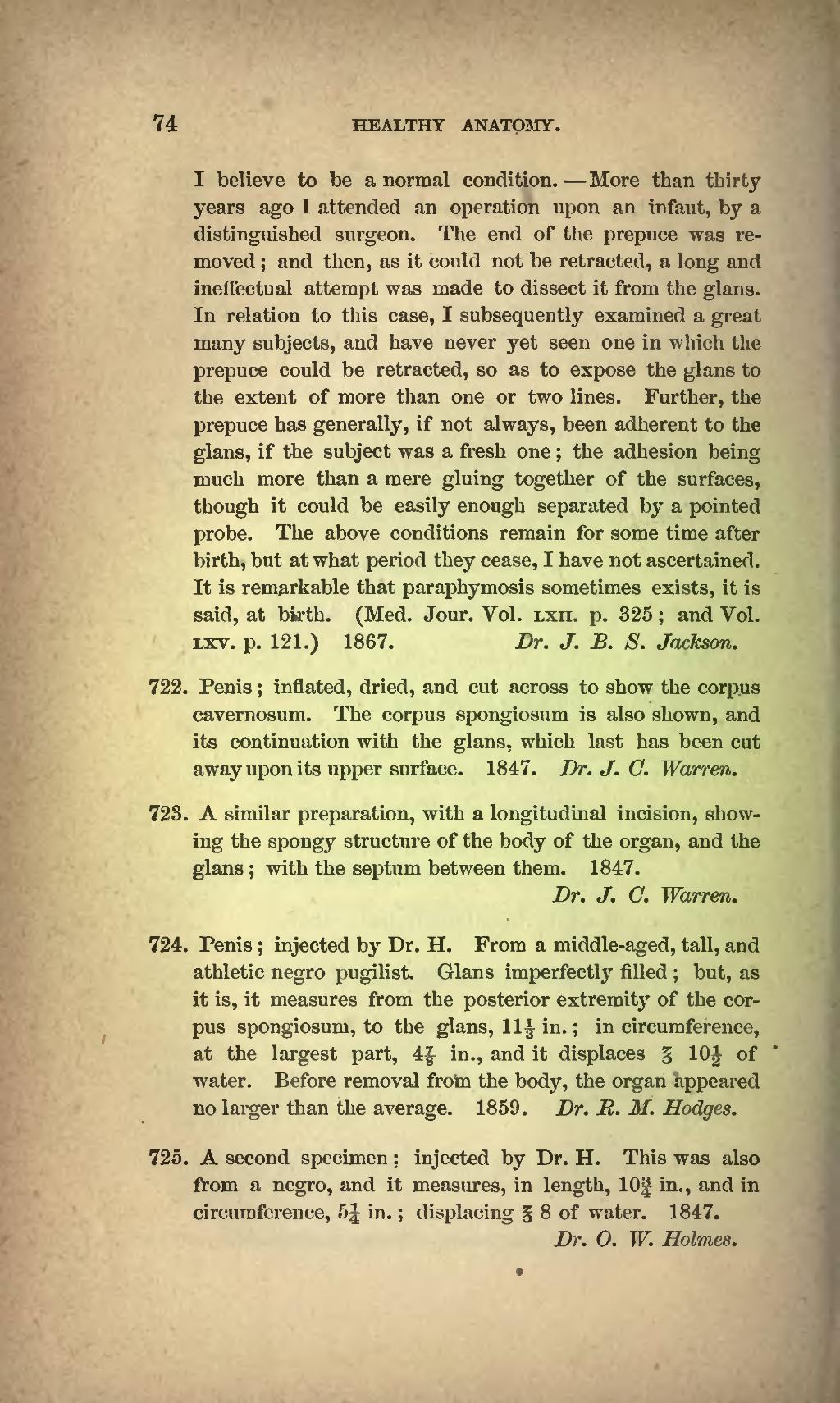74 HEALTHY ANATOMY.
I believe to be a normal condition. More than thirty years ago I attended an operation upon an infant, by a distinguished surgeon. The end of the prepuce was re- moved ; and then, as it could not be retracted, a long and ineffectual attempt was made to dissect it from the glans. In relation to this case, I subsequently examined a great many subjects, and have never yet seen one in which the prepuce could be retracted, so as to expose the glans to the extent of more than one or two lines. Further, the prepuce has generally, if not always, been adherent to the glans, if the subject was a fresh one ; the adhesion being much more than a mere gluing together of the surfaces, though it could be easily enough separated by a pointed probe. The above conditions remain for some time after birth, but at what period they cease, I have not ascertained. It is remarkable that paraphymosis sometimes exists, it is said, at birth. (Med. Jour. Vol. LXII. p. 325 ; and Vol. LXV. p. 121.) 1867. Dr. J. S. S. Jackson.
722. Penis ; inflated, dried, and cut across to show the corpus cavernosum. The corpus spongiosum is also shown, and its continuation with the glans. which last has been cut away upon its upper surface. 1847. Dr. J. C. Warren.
723. A similar preparation, with a longitudinal incision, show- ing the spongy structure of the body of the organ, and the glans ; with the septum between them. 1847.
Dr. J. C. Warren.
724. Penis ; injected by Dr. H. From a middle-aged, tall, and athletic negro pugilist. Glans imperfectly filled ; but, as it is, it measures from the posterior extremity of the cor- pus spongiosum, to the glans, 11^ in. ; in circumference, at the largest part, 4f- in., and it displaces 10 of water. Before removal from the body, the organ appeared no larger than the average. 1859. Dr. JR. M. Hodges.
725. A second specimen ; injected by Dr. H. This was also from a negro, and it measures, in length, 10^ in., and in circumference, 5 in. ; displacing 8 of water. 1847.
Dr. 0. W. Holmes.
�� �
